Honor View 10 review
If the high prices of today’s flagship phones make your wallet tremble, alternatives like the Honor View 10 and OnePlus 6 should have your attention. They cost half the price of an iPhone X, but still offer high-end features and a contemporary design.
Phones like this are an excellent argument for why few, if any, of us really need to spend a huge amount on a new mobile, even if we are getting more demanding by the year.
There's the odd Honor quirk, and the design isn't quite as glitzy as that of the smaller Honor 9 or its 'sister' phone of sorts, the Huawei Mate 10. But it's hard to beat in terms of pure value among high-end mobiles.
Watch the video below to see more about the design of the Honor View 10.
Honor View 10 price and availability
- Launch price: £449 (around $600, AU$800)
- Current price: £399.99 (around $530, AU$710)
At its announcement there was a lot of talk about the Honor View 10's price. It hadn't been revealed properly, and the success of this model depends largely on how competitive its price is.
The Honor View 10 cost £449 SIM free in the UK at launch, which equated to around $600, AU$800.
That price makes the phone, surprisingly, a little cheaper than its arch-rival the OnePlus 5T in the UK. The Honor View 10 has 128GB of storage, and the 128GB version of the OnePlus 5T cost £499 / $559 / AU$699.
Shipping initially on January 8 in the UK, the Honor View 10 also has the honor, no pun intended, of being one of 2018's very first releases.
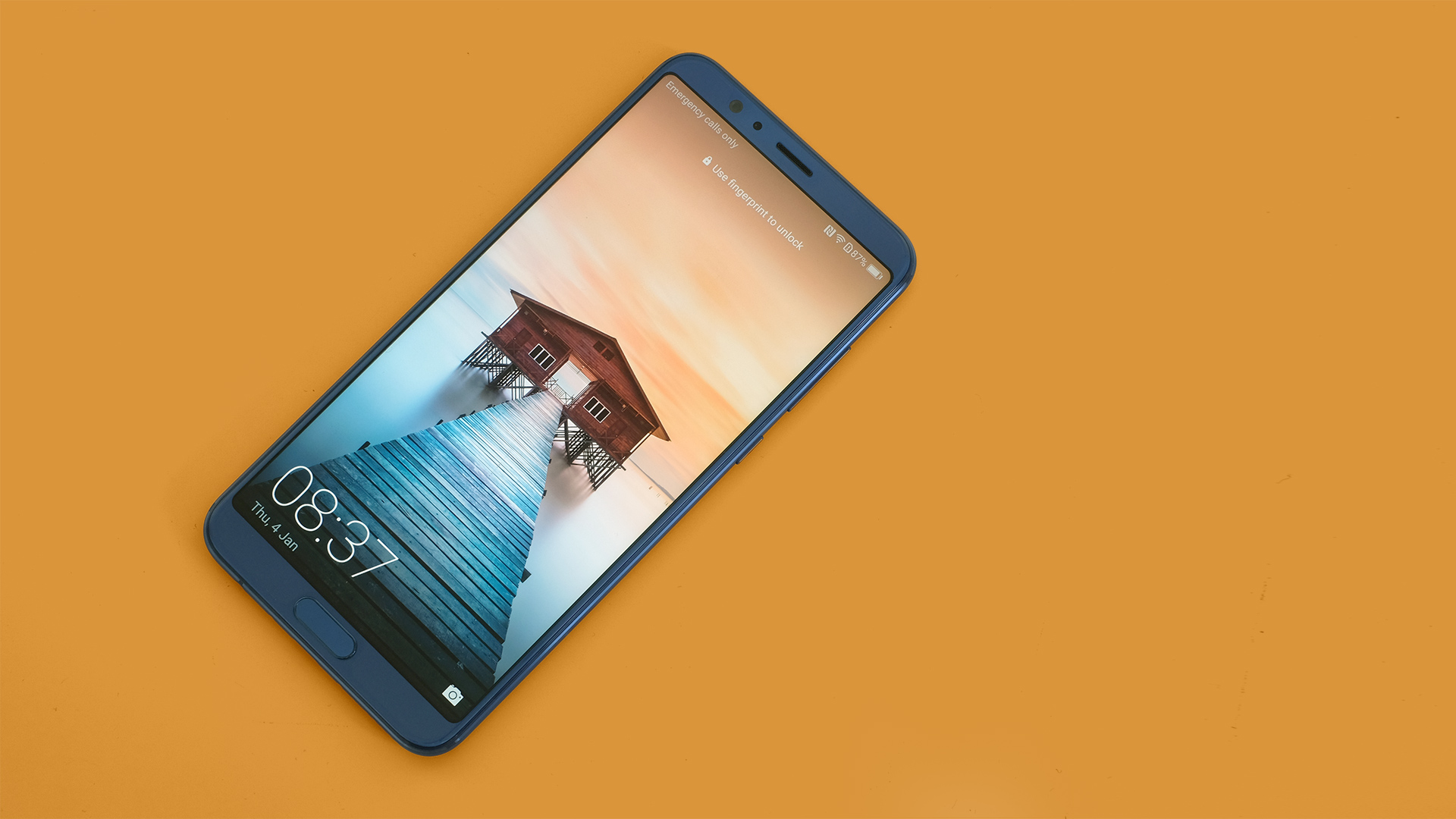
Key features
- High-end features at an aggressive price
- Masses of storage
- High-end Kirin CPU
It's hard not to love the core aim of the Honor View 10. It's out to provide much of the hardware and features of the biggest names, but at a much lower price.
Sure, you don't get a brand name that as many friends will recognize, but if it saves you £300/$300, are the bragging rights really worth it?
And if you must brag, you can still boast about bagging a bargain.
Excellent features for the money include 128GB of storage, the advanced Kirin 970 chipset also seen in the Huawei Mate 10 and Mate 10 Pro, and a 20MP/16MP dual-camera array on the back that offers low-loss 2x zoom.
The phone also follows the latest trend in displays with an ultra-narrow surround that makes the image appear to cover almost the entire front of the View 10.
You miss out on very little of importance with this phone. Just like the Honor 9 before it, the Honor View 10 is impressive.
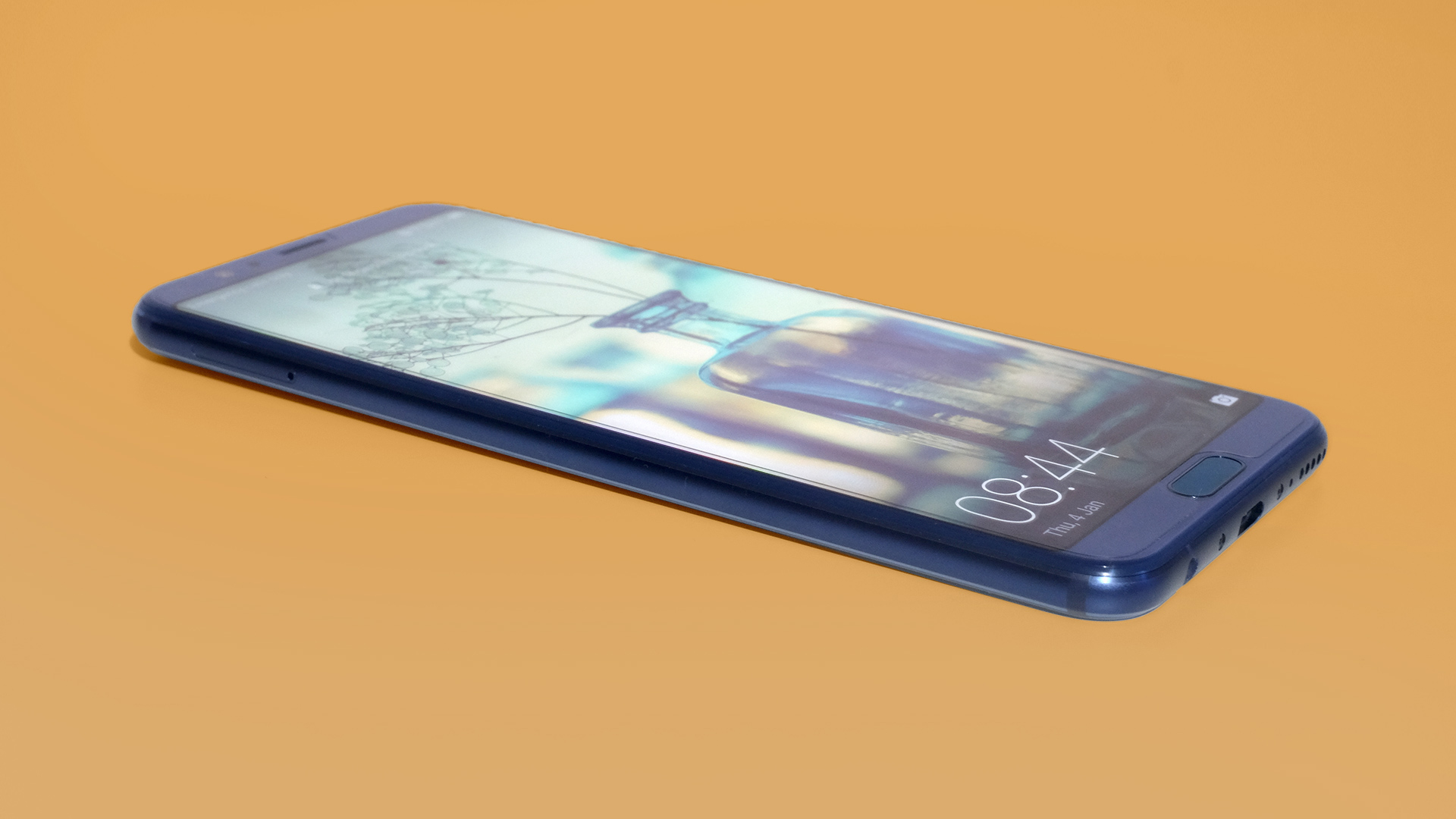
Design
- Slimline screen surround
- Aluminum rear, slim frame
- Great fingerprint scanner
The Honor View 10 looks similar to other late 2017/early 2018 phones front-on. There's just a thin band of border around the display; like its rivals, Honor has pushed for less wasted space.
It's just about the only way to make a phone with a 6-inch screen that doesn't demand extra-wide pockets. Honor hasn't tried to hide what small bits of surround exist, though. They're ultra-glossy blue in the model we reviewed, looking like the finish of last year's excellent Honor 9.
The View 10's back design is totally different, though, more conservative and pragmatic than some of this phone's pricier rivals. Its rear is aluminum and, unlike the old metal iPhones, the sides and rear are separate parts.
While there's some attractive beveling to the side's edges, you can imagine this style might have been used to lower production costs.
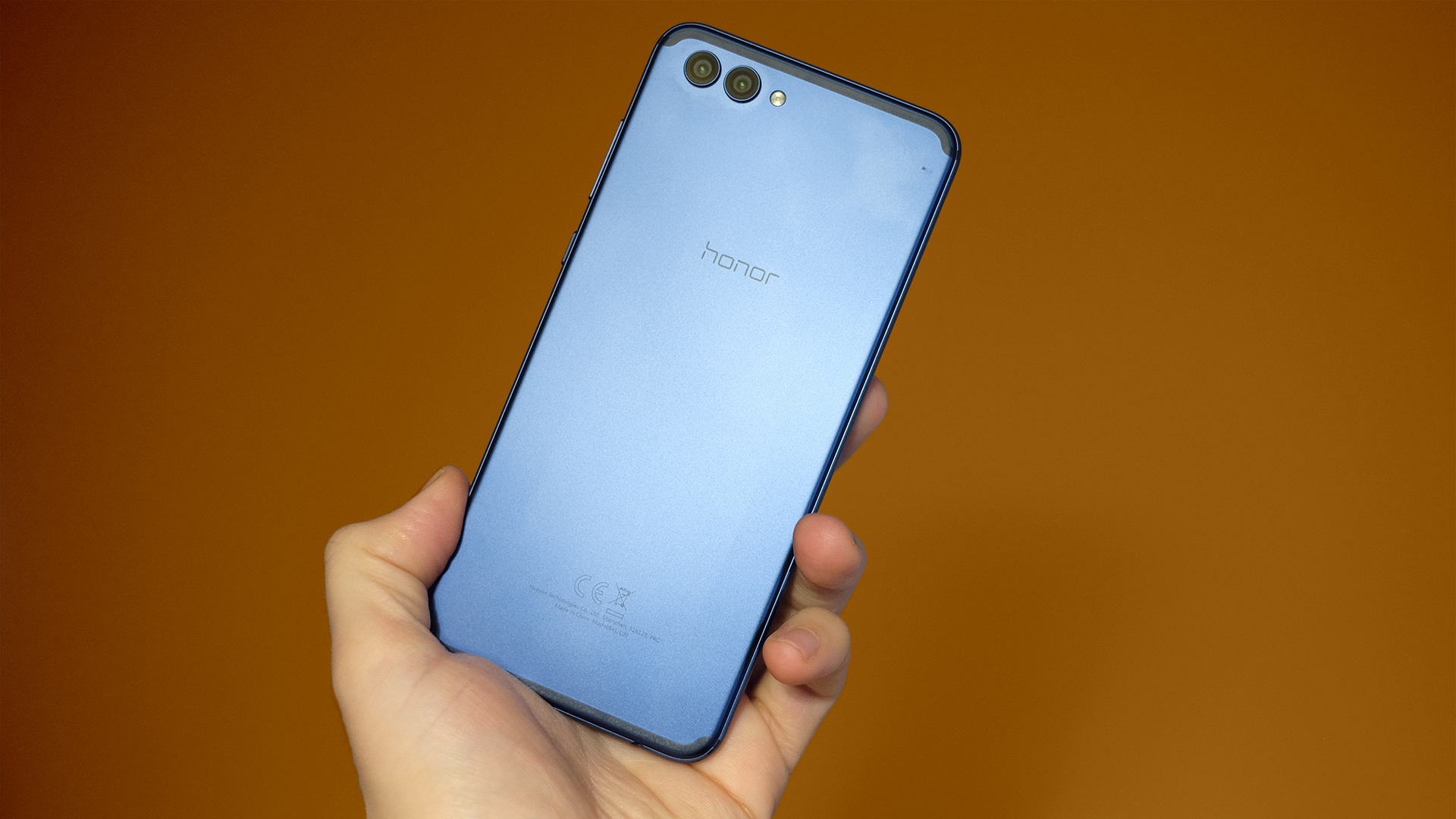
Today’s phone material of choice is glass too, rather than metal. The iPhone X uses it, as does the Samsung Galaxy S8, with aluminum seen by some as 'mid-range'. This is a slightly ridiculous notion, but those obsessed with being on-trend may disagree.
The Honor View 10 is extremely thin, however. At 7mm thick it's thinner than the iPhone X or Galaxy S8. It's so thin, you have to wonder: why?
An extra 0.7-0.8mm of chunk wouldn't hurt the View 10's design much, and would allow for a larger battery and avoid the dual camera lenses sticking out on the back – as it is they look like a pair of Minion™ goggles.
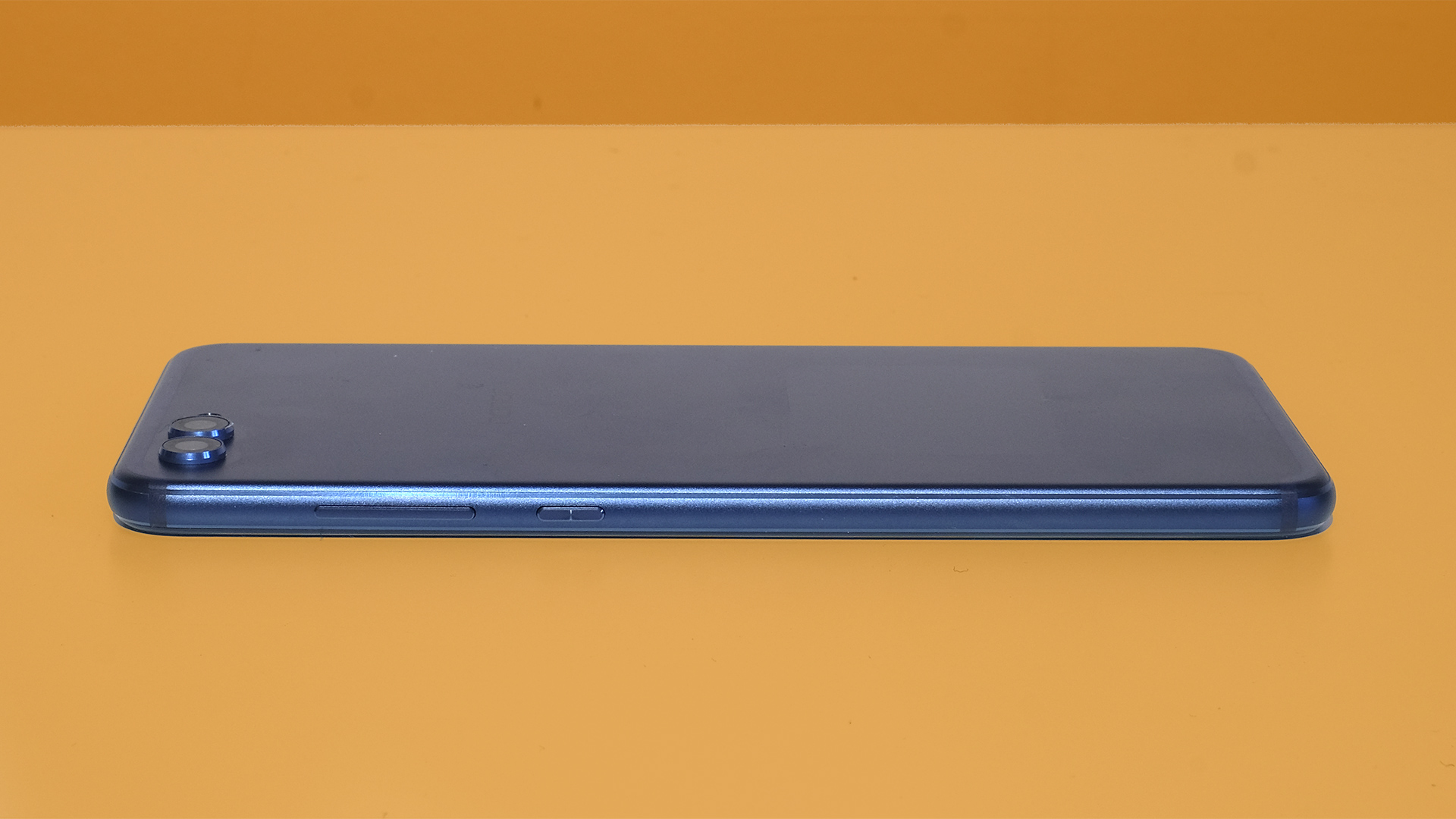
However, as the colored aluminum of the rear is almost certainly going to get damaged before anything else, you may want to consider a case anyway. And all of our criticisms are quibbles. The Honor View 10 is a well-made, attractive phone, and its price rival the OnePlus 5T also uses aluminum on its rear.
Like the Honor 9, the View 10 has a fingerprint scanner on the front, and it's a fantastic one – it's so fast you can barely believe it's actually scanning your digit, and it's a joy to use.
Dig into the Settings menu and you can also use the scanner to replace the on-screen home keys. We wouldn't recommend this to most, though, as the slim surround design leaves virtually no breathing room between the scanner and display.
Look on Honor's website and you'll see it promises Face Unlock as a View 10 feature, but it's not here yet, rather it's promised as a software update. What we have for now is something rather more unusual. You can teach the phone your facial geometry and it'll blank out the notification details on your lock screen until it recognizes your face with the front camera.
This is a neat idea, a less critical way to implement facial recognition more simplistic than the iPhone X's, although we've found it struggles to recognize faces in dim indoors lighting or under high-contrast lighting. And you can't see your notifications unless you're looking at the display dead-on.
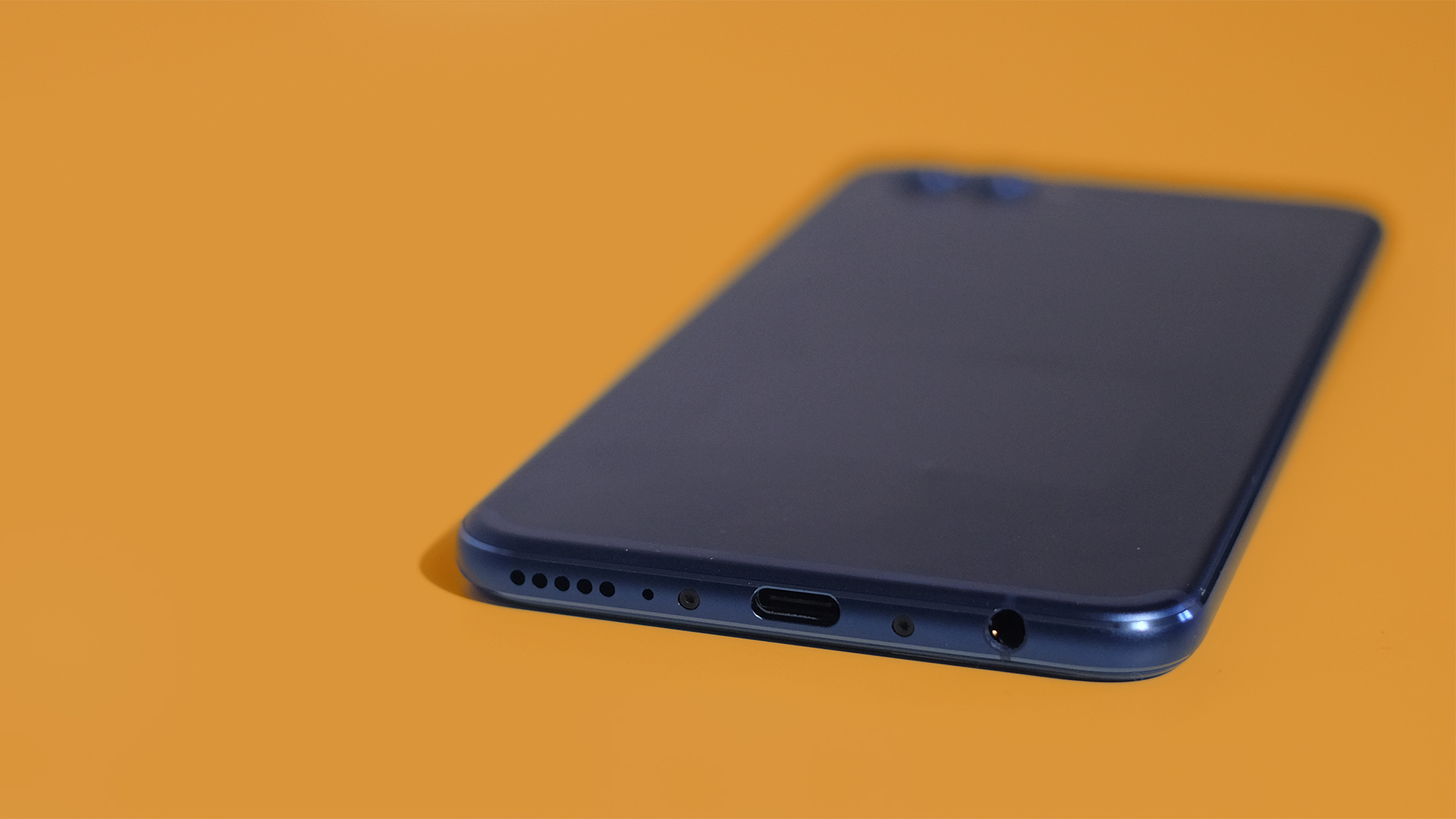
One of the few obvious hardware sacrifices of the View 10 is water resistance. The phone has no official water resistance, although we'd hope there's a degree of water protection in the charging port. It's worth noting though that the Huawei Mate 10, a similar but far more expensive phone, also lacks water resistance.
There are also some ways in which we're glad the View 10 hasn't followed the 'trendy' flagship crowd. There's a headphone jack where several of the most expensive phones have rejected them (for no obvious benefit), and despite the phone having a huge 128GB of storage you can still add a microSD card – the SIM tray has a slot for one.
Screen
- 5.99-inch LCD screen
- Customizable display tone
- Ultra-wide 18:9 aspect ratio
The Honor View 10 has a 5.99-inch IPS LCD screen, with a stretched-out Full HD resolution of 1080 x 2160. This display is similar to that of the OnePlus 5T, except that it uses an LCD panel rather than an OLED one.
The difference? OLEDs tend to have richer color and always have better contrast thanks to their light-emitting pixels, but LCDs can look sharper than an OLED of the same resolution, as most OLED panels in phones use 'shared' sub-pixels.
We'd suggest not getting too hung up on the differences here, though, because the quality of the Honor View 10 minimizes their importance. Colors look great, the display is sharp despite having far fewer pixels than a Samsung Galaxy S8, there's barely any brightness loss from an angle, and contrast is excellent.
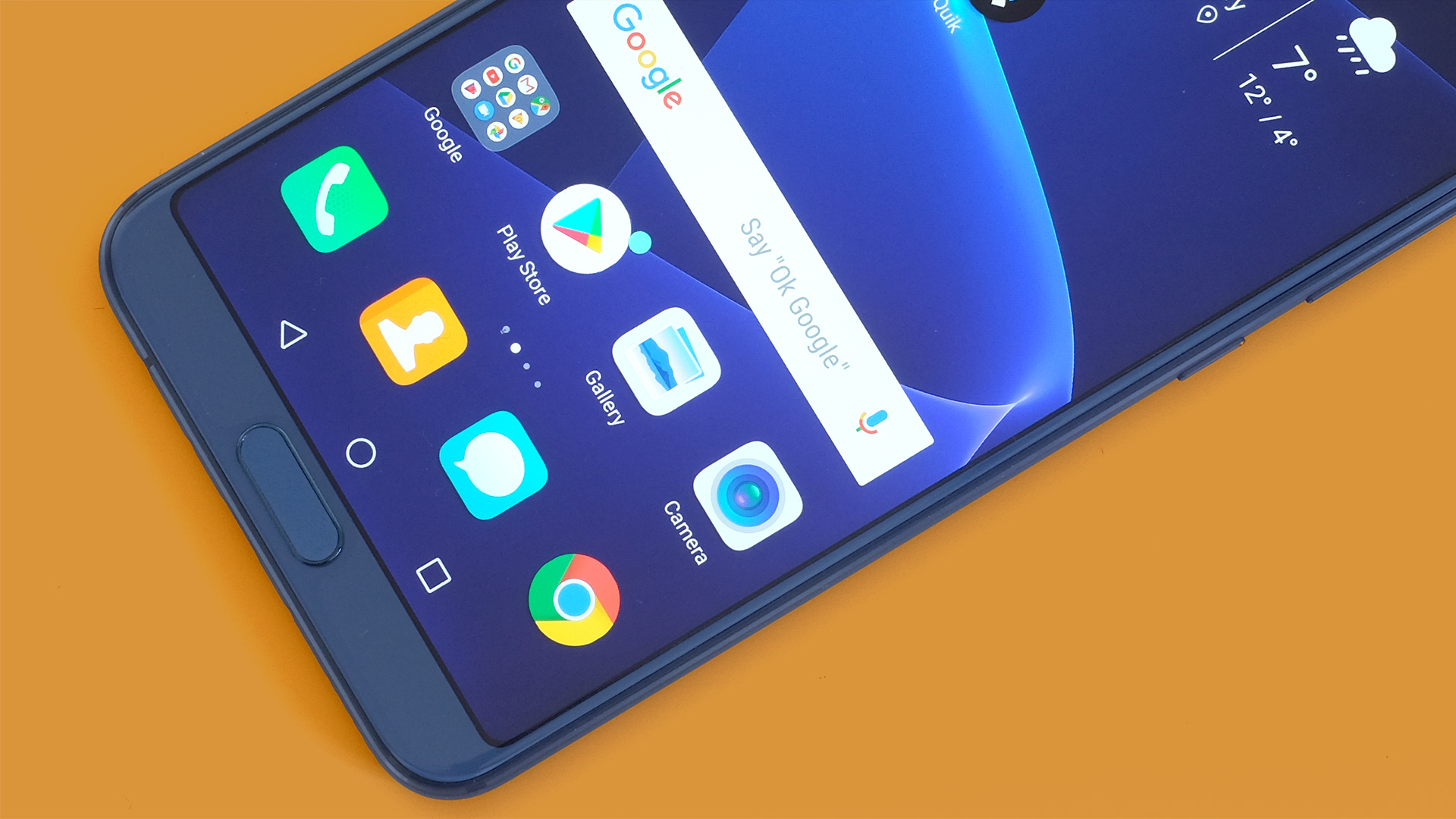
At an angle, in a dim room, you can see the backlight luminescence, though, and fresh out of the box the View 10's colors are a little hot, typical of the standard screen calibration of any high-end Android. However, if you like a more relaxed tone you can switch from Vivid mode to Normal in the phone's display settings.
Like other Honor phones, the View 10 also has a color temperature wheel that lets you make the screen appear warmer or cooler, or give it a (slightly) more specific color skew.
As this will probably be your first phone with an ultra-narrow screen surround, though, it's the shape of the View 10's screen that's one of the most important elements. This doesn't feel like a 6-inch screen because it's only really longer than the norm, not wider. It feels more like an ultra-widescreen take on a 5.5-inch phone.
This is no slight, though. Games look great on the View 10's screen, as do cinema-aspect movies.
Battery life
- 3,750mAh battery
- Comfortably lasts well over a day on a single charge
The Honor View 10 has a 3,750mAh battery, which is higher capacity than that of the OnePlus 5T (3,300mAh) and just a little lower than the 4,000mAh of the Huawei Mate 10.
However, in our 90-minute video playback stamina test the phone actually fares worse than the OnePlus 5T. It loses 15% battery, to the OnePlus's 12%. The Honor also holds onto its "100%" state for a while too, meaning you'll lose a little more charge when the test is run from a lower battery level.
This is not a bad result at all, but some phones with smaller batteries do better. The very bright LCD screen is the likely culprit, as it may be less efficient than a top Samsung OLED panel.
With general real world use, and that backlight tamed, the result is more impressive. On an average day of use during the week, which is harder than most given how we use our phones, the Honor View 10 ends up with around 30-40% charge left by bed time.
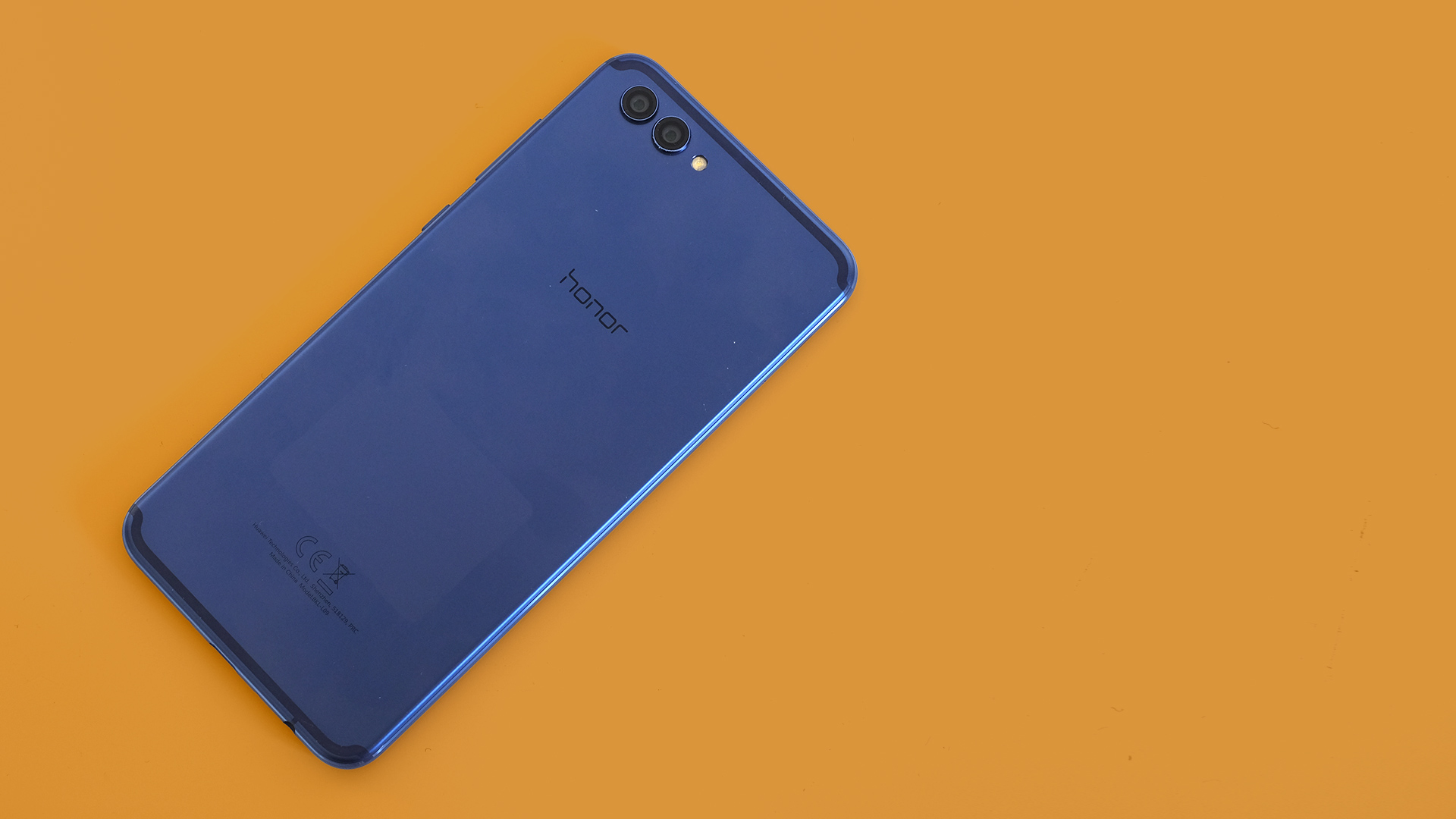
On a weekend, when we tend to be out and about a bit more and less attached to our phones, the Honor View 10 had 60% battery left by 11:30pm on Saturday night. That included several hours of podcast and Spotify streaming and a bunch of photos captured: not an entirely easy ride.
It lost another 9% overnight, but still left us with 51% at 9:30am on Sunday. We do indulge in the occasional lie-in even at TechRadar. Not everyone will get two days' use out of the Honor View 10, but it's certainly possible.
Honor's own claims for the battery include that it lasts for 5.5 hours of gaming, 19 hours of video or 21 hours of 4G browsing. There are also numerous battery-saving options, including reducing the display resolution to 720 x 1440.
The View 10 uses a USB-C port to recharge the battery and, like OnePlus, Honor implements a high current (rather than high voltage) solution. It takes 2 hours 10 minutes to recharge from flat, with the phone switched on once it has enough power.
Want to learn more about the media and camera capabilities of the View 10? Watch the video above!
Camera
- Dual rear camera
- Low loss 2x zooming
- Good but not class-leading image quality
The Honor View 10 has more megapixels combined than virtually any other phone you can currently buy: 49 of the things in total. However, the camera is actually one of the areas where you can get perceptibly better performance from one of the more expensive alternatives.
On the back of the View 10 sits a bug-eyed pair of camera lenses. One uses a 16MP color sensor, the other a 20MP black and white sensor.
Huawei and Honor have used a similar setup before, the higher-resolution 20MP camera being used to let you zoom at 2x and see more detail than you would from simply cropping into the standard 16MP image.
Before we get too deep into image quality, one of the main takeaways of the View 10 camera is that it's a lot of fun to use. There's virtually zero shutter lag, focusing is reasonably fast most of the time and you can shoot away using the Auto mode and get (mostly) great shots all day long.
While there's no explicit Auto HDR mode, it's clear the phone makes significant dynamic range enhancements with every shot taken.
Honor talks up the use of "AI" in the camera, but aside from sharpening text using the 2x zoom this boils down primarily to fast scene mode selection: nothing too exciting.
Pervasive, image-ruining blown highlights are a rarity and as long as you choose your subject correctly, your photos shouldn't look too dim. Aside from having to be a little careful about macro-level focusing, using the View 10 camera is a pretty carefree experience.
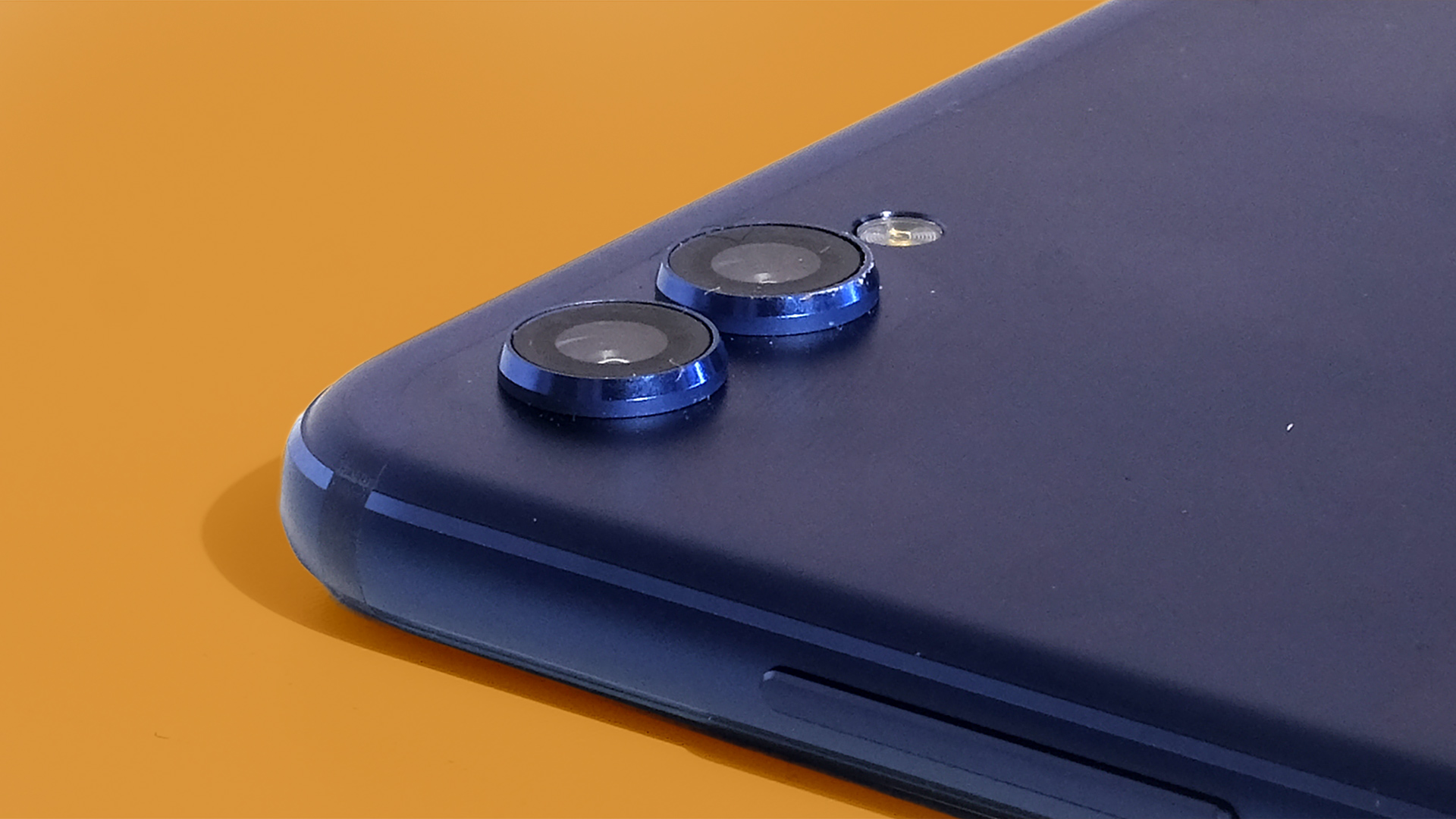
It also has more extra modes than most competitors. From the main shooting screen you can use the common "shallow depth of field" effect, which lets you blur out the foreground or background of the image, to dramatic effect. There's also a Portrait mode (front and rear cameras) and a Moving Picture mode that, like an iPhone, takes a short video clip with each capture.
A reminder: these are just the modes on the shooting screen itself.
Flick left to right in the camera app and you open up a chest of extras. Some are classics, like Panorama, Pro Mode and HDR. However, others are inspired by popular apps like Prisma and Snapchat.
Artist mode features ultra-stylized filters that make your shots look like paintings. AR lens lets you put various cartoon ears and eyes on yourself in real-time. Or make yourself part of strange Japan-inspired animations that are either social network gold or the stuff of nightmares, depending on your inclinations.
There's a lot of "stuff" here, but we wouldn't be surprised if quite a lot of people ignored this extra modes menu. Its existence isn't actually that obvious and most get their filters from other apps. Right?
Back to the meat of the Honor View 10 camera, image quality is generally very good. The software does a good job of juggling different lighting conditions and scenes, letting you be pretty careless about how you shoot.
However, it does trade in image impact rather than outright realism at times. Exposure metering is in some circumstances higher than it should be and greens are generally rendered too bright.
For certain scenes, the View 10's tendency to ramp up the brightness until the highlights get near to clipping can spoil the contrast a little. The OnePlus 5T does better on this front.
You also don't get the additional detail you might expect from a higher-megapixel sensor. There's lots of detail, but right down at pixel level sharpness isn't as good as that of a top-quality 12MP camera.
Then there's the View 10's zoom. The phone doesn't use a 2x secondary zoom lens, just a higher-resolution sensor with a similar field of view.
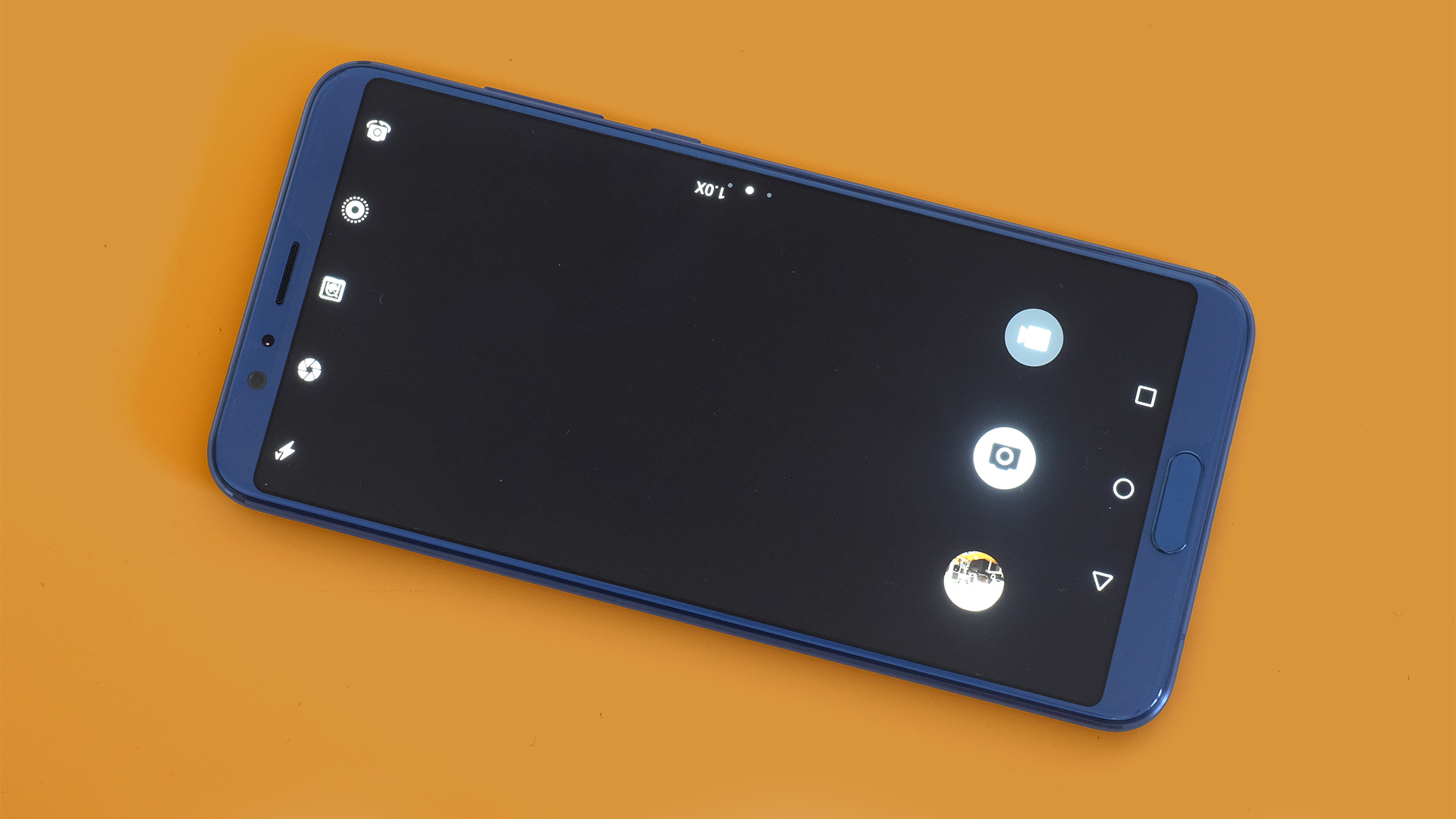
There is a significant difference in the quality of the 2x and 1x photos, with some extra fine detail and much better rendering of small text when using the zoom. The zoomed images also have less jazzed-up color and worse noise handling than the standard images.
Dynamic range optimization also ramps down, meaning if you're shooting a sunset and need zoom you may be better off using the HDR mode and using the pinch gesture digital zoom rather than the separate 2x zoom button.
Just okay detail for the megapixel count becomes most obvious with macro photos. It's very hard to get the larger-than-life "pop" that makes a great macro shot stand out.
At night we've coaxed mixed results from the Honor View 10. The rear camera does not have OIS, which stabilizes the sensor to both let the camera use slower shutter speeds and make blurry handheld shots less of an issue.
Shooting handheld at night with some street lighting to help, our hit rate on sharp shots was only about 30%. The quality of resulting images varies wildly, ranging from some of the more detailed shots you'll find from a non-stabilized phone camera to pure mush. Take four or five shots for every scene you shoot at night and you might get a hit.
The OnePlus 5T and many other flagships are better night shooters. This phone also struggles with near-pitch-black scenes. While the sensor is high-quality enough to still capture the scene in basic form, you tend to end up with near-black shots.
For video, the View 10 shoots at up to 4K resolution with the rear camera, and up to 1080p with the front. 60fps 1080p footage with the main camera is also an option.
The front camera has a 13MP sensor, and takes shots with a very good amount of detail in reasonable lighting. In a dingy pub, selfies look a little soft, but that's no surprise. We have seen 8MP models that can bring out more detail, though, such as the Google Pixel 2 XL's.
Camera samples
Interface and performance
- Android 8.0 with Huawei EMUI interface
- Customizable system layout
- Very good general performance
The Honor View 10 runs Android Oreo with the Huawei-made Emotion UI (EMUI) interface pasted on top. This too is at version 8.0, the same used by the Huawei Mate 10 and Mate 10 Pro.
If this is the first time you've come across EMUI, your initial reaction may be: oh no, what have they done to Android?
As standard it rips out the app drawer, making the system seem as though it's missing a limb. However, for a while now EMUI has let you switch over to an interface view with a vertical apps menu, just like other Android phones.
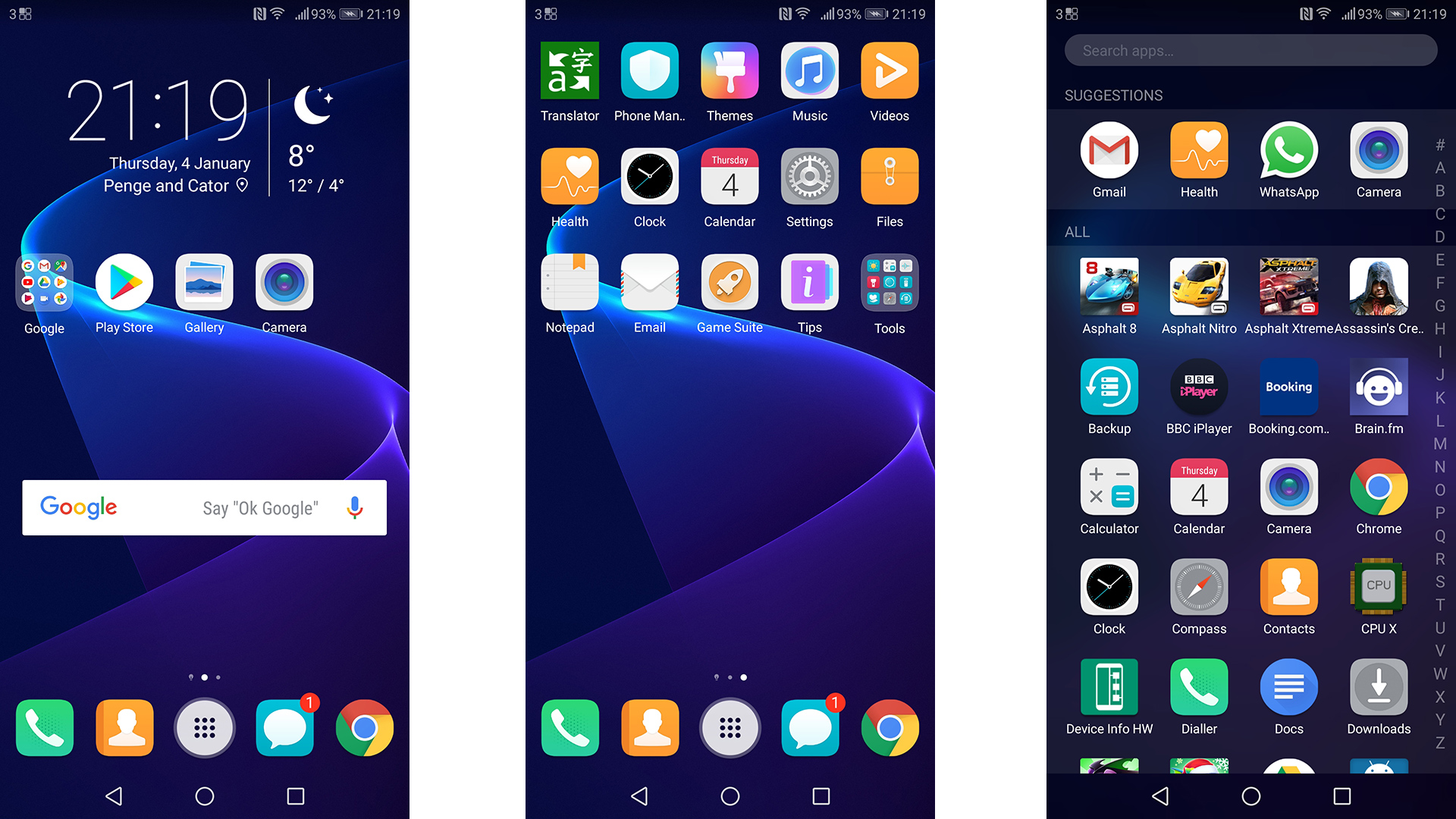
EMUI has had armies of detractors attack it in the past, but as long as you're willing to explore its customization options a little, we think there's little to seriously dislike here.
Aside from the pre-installed apps. Like many older Honor phones, the View 10 comes with a bunch of Gameloft games packed-in. Bafflingly, they're titles so old Gameloft has actually pulled them off Google Play.
You could call it an "exclusive" if you like, but it's a pretty musty one.
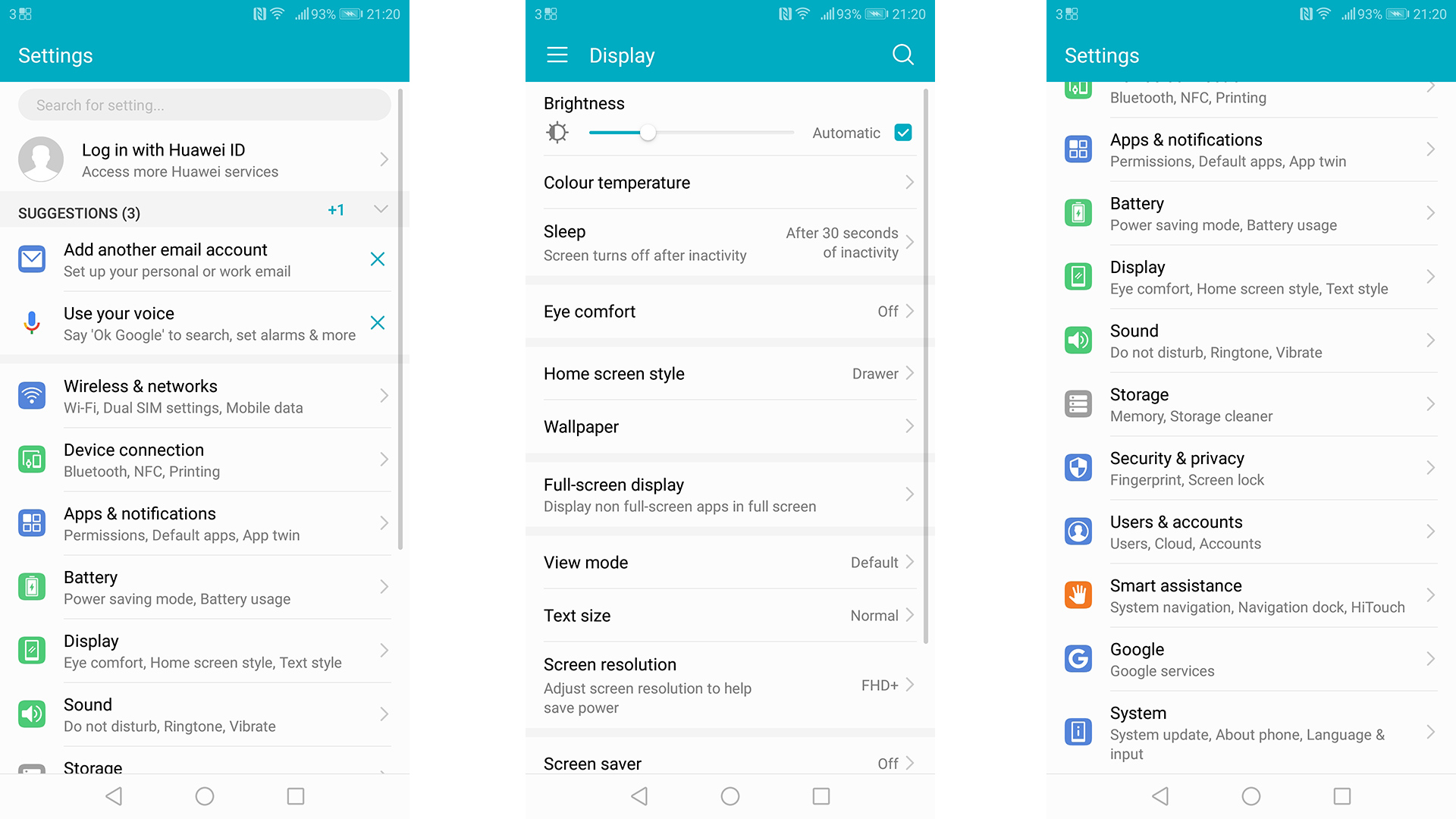
Compared directly with some other recent Android phones, the View 10's interface style is a little more abrupt, emphasizing speed and snappiness over a smooth feel. But when hasn't fast felt good?
EMUI is also more customizable than standard Android. You can choose how many columns of icons to fit in your home screens and whether to use Android 7.0's app update pips (these place little circles over app icons when they have pending notifications), for example.
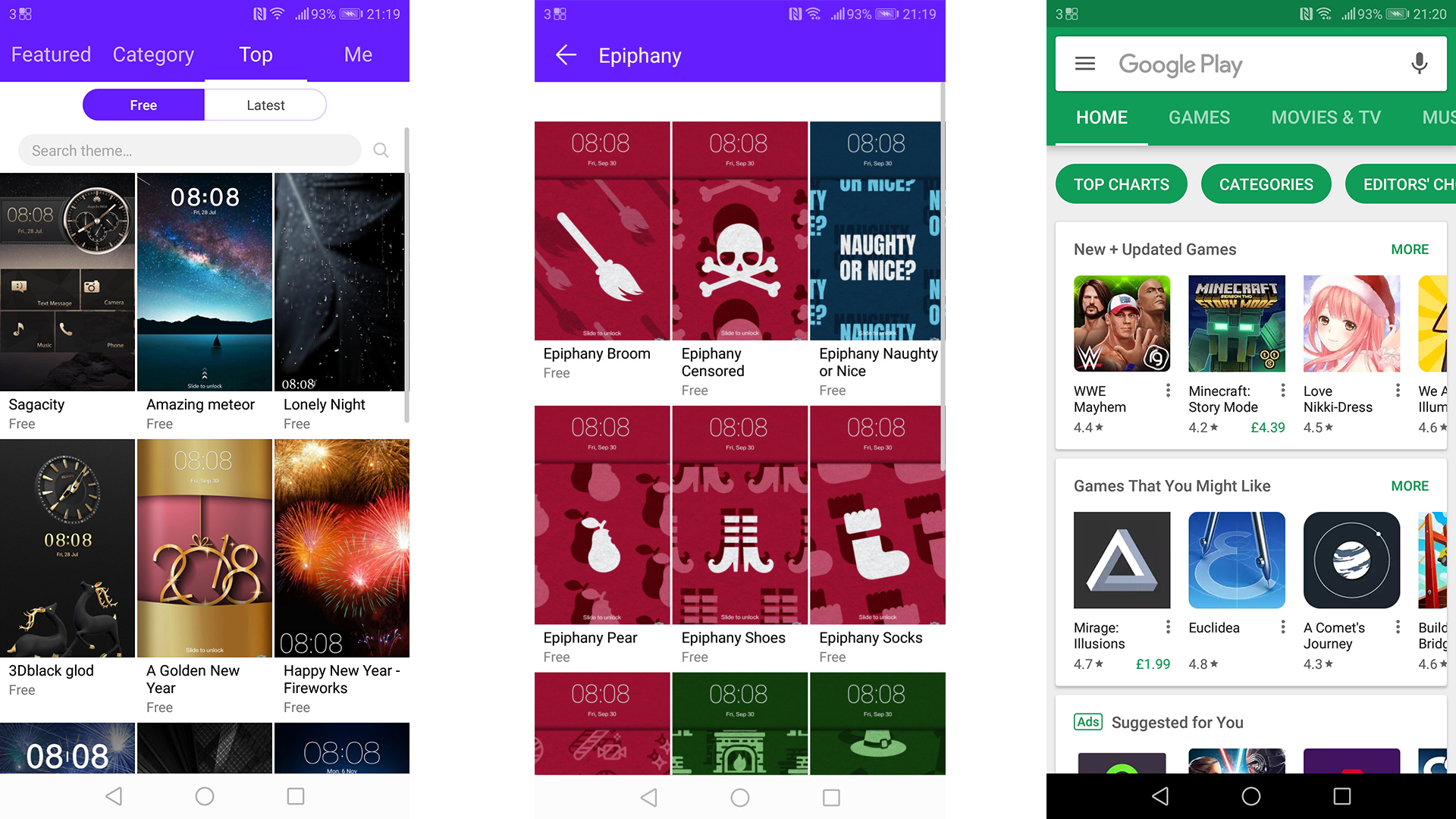
However, the two customization biggies are being able to choose whether or not to have an app drawer and themes. Like other EMUI phones, themes alter the icon style, backgrounds, and lock screen.
We're happy with the default theme, although some of you may not like the View 10’s lock screen, which displays a random image from a stock selection whenever you bring the phone out of standby.
The Honor View 10's general performance is excellent. Even apps that haven't been loaded into system RAM are quick to load, and the interface flies by as quick as your fingers can manage.
Movies, music and gaming
- Oodles of storage for games and media
- Great gaming performance
- Single speaker of reasonable quality
Every game we tried on the View 10 ran well too. We'd be disappointed with anything less given the phone's Kirin 970 CPU has a 12-core Mali-G72 graphics chipset.
While this is not quite as fast as the 20-core Mali-G71 used in the Samsung Galaxy S8, it's not far off and the Honor phone has far fewer pixels to serve thanks to its lower resolution screen. The View 10 also benefits from a meaty 6GB of RAM.
Asphalt 8 is very enjoyable with maxed-out graphics, and with games that (can) use virtual controls like this, the extra horizontal screen space makes it easier to avoid blocking the on-screen action with your thumbs.
The View 10 also has a Game Suite app that lets you make sure performance isn’t throttled while you play. It also stops notifications from popping up while you play, and disables the soft key buttons too.

With games and all non-streamed media, the View 10's 128GB of storage is also a massive benefit.
As is the headphone jack: don't undervalue it now it's an endangered species.
Honor doesn't offer any clever third-party music or video apps, leaving you to use Google's suite or one of your own favorites. However, it does have a special move up its sleeve.
On the top of the View 10 you’ll see an IR blaster. This lets it mimic the signals sent by standard home entertainment/TV remotes, using the Honor Smart Controller app. You can use this phone as a universal remote.
While we'll admit we rarely use this feature in phones that have it, an IR blaster can be extremely useful if you misplace or outright lose the remote for something in your living room.
Back to the conventional stuff, the View 10 has a single mono speaker on its bottom. Keeping pace with the middle-range crowd, this speaker is reasonably loud and has some extra mid-range presence, making podcasts and quick blasts of music more enjoyable.
However, having listened to the Razer phone's ultra-loud speakers recently, the View 10's audio is nothing too special.
Check out the video below to hear more about the UI and performance.
Benchmarks
- Benchmarks roughly match the Snapdragon 835
- Lots of power for the price
You might be tempted to call the Honor View 10 a mid-range phone just because it's a lot cheaper than some of the alternatives. However, its Kirin 970 CPU is a high-end mobile chipset.
This uses four Cortex-A73 cores and four lower-power Cortex-A53s, the kind seen in most actual mid-range phones.
Its architecture is a little different to the more popular Snapdragon 835 chipset, which uses Kryo cores, but performance in the Geekbench 4 benchmark is still very impressive. The View 10 scores 6,818 points (1,914 per core), just slightly higher than the 6,663 average of the OnePlus 5T, which uses a Snapdragon 835.
While Geekbench 4 scores aren't a perfect representation of real-world performance, this phone easily has enough power for any current phone uses. And more than enough to justify its price.
Verdict
Phones like the Honor View 10 are more important than ever, now the most expensive top-end alternatives can cost hundreds of pounds/dollars more.
If you'd told us we'd be spending £700/AU$1,100 (around $945) on a Huawei phone like the Mate 10 Pro three or four years ago, we might not have believed you.
The View 10's much lower price makes it a great choice for those after high-end power and design for less money.
You don't quite get as good a camera as the OnePlus 5T or the £700/$800-plus crowd, but it too is good and fun to use, and just about every other aspect of the phone is good or great.
Watch our video verdict below!
Who's this for?
The Honor View 10 is for those after a phone with high-end hardware but not the kind of price top-end phones from Samsung and Apple land at these days. Like the OnePlus 5T, it's a great deal.
Should you buy it?
There are just a couple of reasons to steer away from the Honor View 10: the even more affordable Honor 9 and the excellent OnePlus 5T.
OnePlus's phone offers a slightly better camera. However, the View 10 also gets you more storage for the same money. So pick your priorities and check out the deals at your favorite network.
Great as the Honor View 10 is there are also a number of impressive alternatives, such as the following.
OnePlus 5T
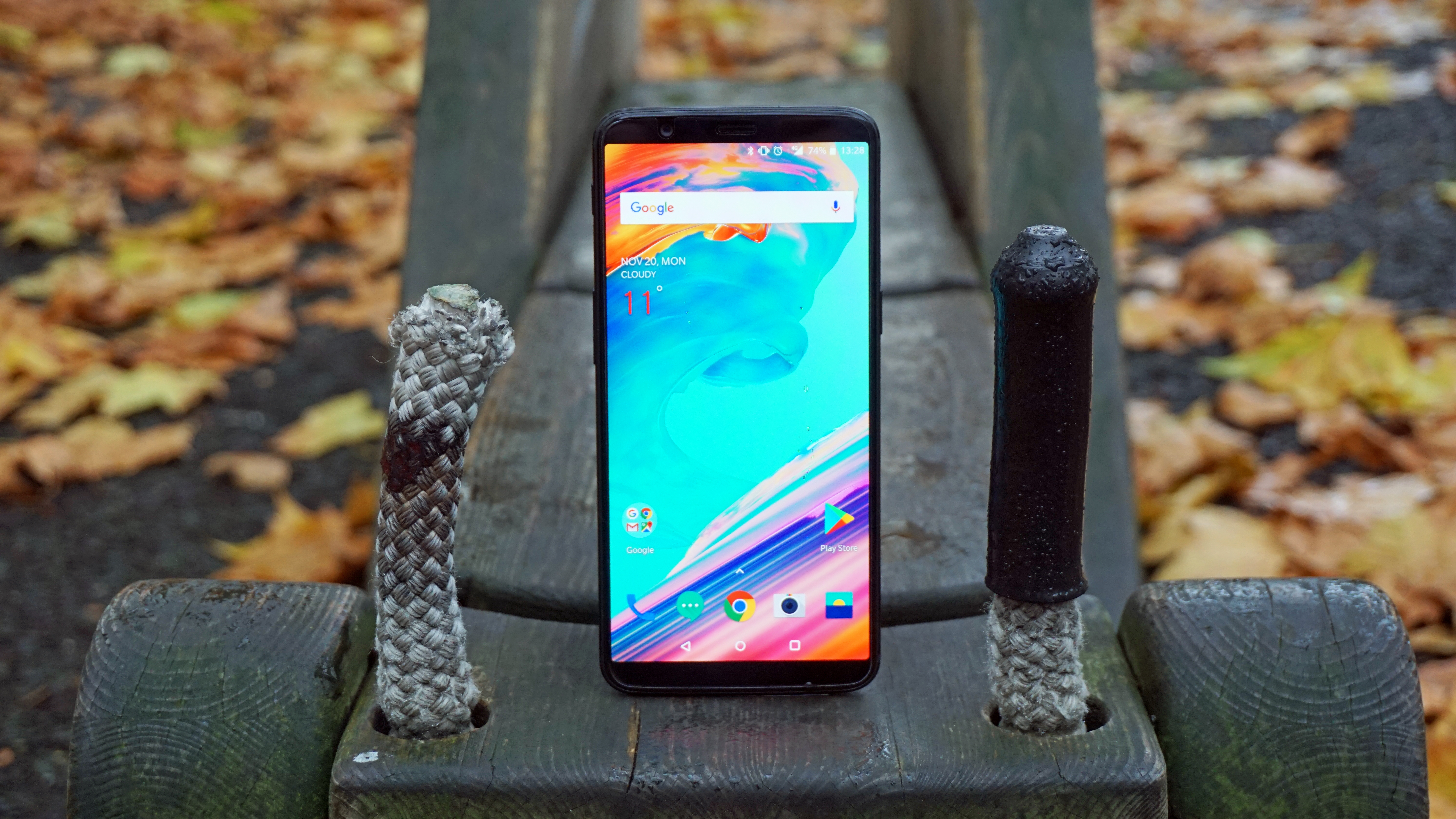
The main rival to the Honor View 10, the OnePlus 5T, is probably a slightly better phone, largely thanks to a slightly more versatile, stabilized camera. Would we pick the OnePlus? Again, probably.
However, in most respects the two are roughly evenly matched. And for the same storage spec the Honor phone is actually slightly less than the OnePlus. These are the value kings among upper-mid or high-end phones.
Read our in-depth OnePlus 5T review
Huawei Mate 10

Honor is essentially part of Huawei, but the Mate 10 is the closest phone with Huawei branding, and it has a sharper screen and stabilized camera. It also has less storage and costs more.
Is it worth it? Not if you care how much phone you get per pound/dollar above most other concerns.
Read our in-depth Huawei Mate 10 review
HTC U Play
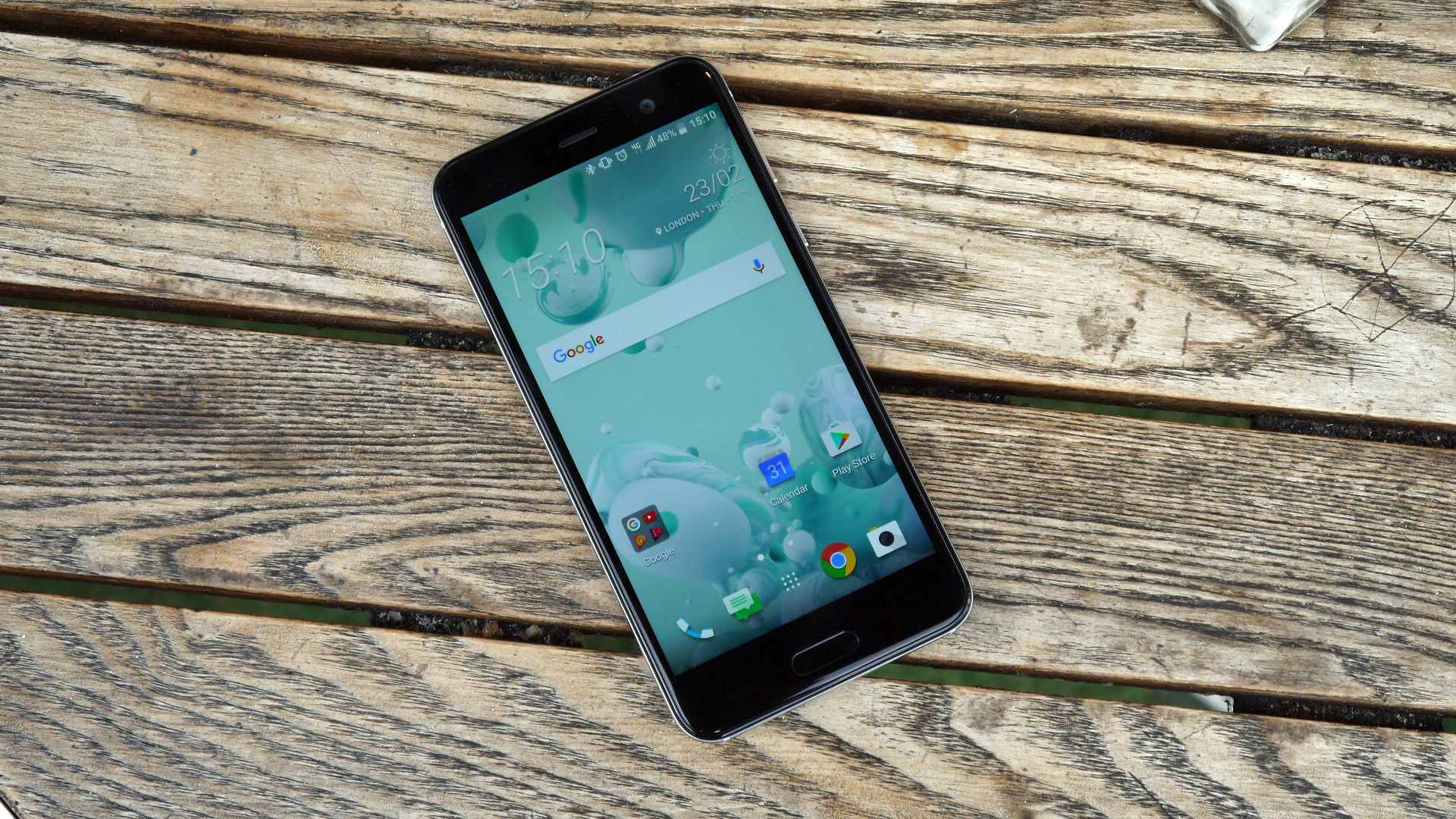
Proving just how special the Honor View 10 is, the HTC U Play is slightly cheaper than the Honor but isn’t close in terms of specs. It has a more mid-range CPU and a less dynamic screen design. It’s smaller, so will have its fans. But the Honor is the clear value winner.
Read our in-depth HTC U Play review
First reviewed: January 2018
0 comments:
Post a Comment